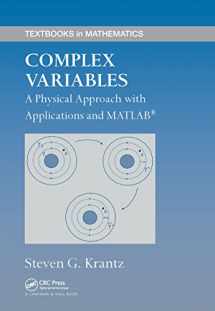
Complex Variables: A Physical Approach with Applications and MATLAB (Textbooks in Mathematics)
Book details
Summary
Description
From the algebraic properties of a complete number field, to the analytic properties imposed by the Cauchy integral formula, to the geometric qualities originating from conformality, Complex Variables: A Physical Approach with Applications and MATLAB explores all facets of this subject, with particular emphasis on using theory in practice.
The first five chapters encompass the core material of the book. These chapters cover fundamental concepts, holomorphic and harmonic functions, Cauchy theory and its applications, and isolated singularities. Subsequent chapters discuss the argument principle, geometric theory, and conformal mapping, followed by a more advanced discussion of harmonic functions. The author also presents a detailed glimpse of how complex variables are used in the real world, with chapters on Fourier and Laplace transforms as well as partial differential equations and boundary value problems. The final chapter explores computer tools, including Mathematica®, Maple™, and MATLAB®, that can be employed to study complex variables. Each chapter contains physical applications drawing from the areas of physics and engineering.
Offering new directions for further learning, this text provides modern students with a powerful toolkit for future work in the mathematical sciences.


We would LOVE it if you could help us and other readers by reviewing the book
Book review



